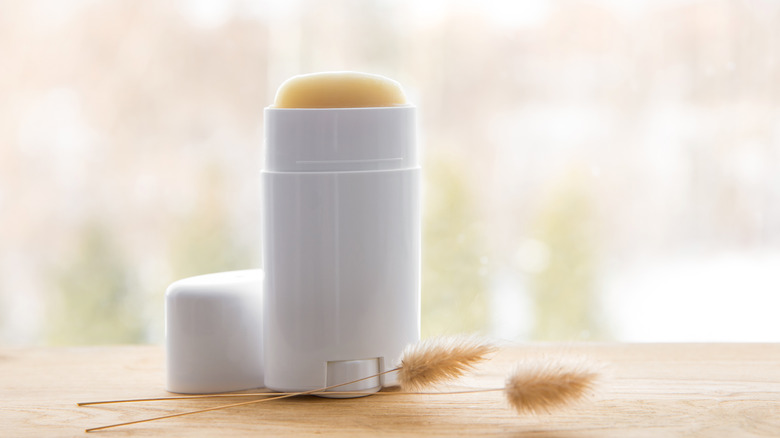Are Women's Deodorants Really Different From Men's?
Gender inequality is an issue we've discussed over the course of generations, but, somehow, we're consistently finding disparities to reflect on. One of these is the "pink tax," or a tax on products marketed toward women that do not appear in the same products targeting men. A co-founder of Period Equity, lawyer Jennifer Weiss-Wolf, shared with Healthline that the pink tax is an "income-generating scenario for private companies who found a way to make their product look either more directed to or more appropriate for the population and saw that as a moneymaker." The difference between products marketed toward men and women could be as high as 50%, per Consumer Reports. The New York City Department of Consumer Affairs found that all but 5 of the 35 surveyed products cost more for the "women's" version than the "men's."
In 1995, the Gender Tax Repeal Act equalized the costs of services for those of all genders, such as haircuts and massages, but when it comes to unfair product pricing, passing legislation to regulate costs has proven more difficult. There are even appeals courts which say that it is up to consumers to do away with gendered expectations for the products we should and shouldn't buy. This begs the question: are the differences between products marketed toward men and women substantial enough to keep consumers from crossing gendered product lines? Ultimately, there are a number of factors to take into consideration before labeling products as "not meant for us."
Ingredients come into question
Randy Schueller, a cosmetic chemist, told Teen Vogue about the difference between antiperspirants and deodorants. "Antiperspirants [sometimes] contain aluminum salts that help plug your pores so you don't sweat as much." He added, "Deodorants do not contain aluminum, and they don't stop you from sweating. They only reduce body odor, by using fragrance or antibacterial compounds." A study in the National Library of Medicine also showed that antiperspirants affect natural bacteria in armpits, adding more diversity in species than we should find in this part of the body. However, this did not point to a negative overall impact on the armpit's microbiome or ability to produce beneficial oils.
Since the '90s, there has been a popular theory that deodorants with antiperspirant properties cause breast cancer by blocking our sweat glands. However, there has been no clinical proof, according to Dr. Harould Burstein, with the Dana-Farber Cancer Institute and Harvard Medical School. Dr. Burstein told The New York Times, "To date, there's absolutely no evidence that breast cancer is caused by exposure to anything in antiperspirants or deodorants, full stop." He also shared that the link between small traces of aluminum found in some deodorants and breast cancer has not been verified either. However, there's another element in both men's and women's deodorant, that we should be on the lookout for.
Most formulas are nearly identical
In 2021, Proctor and Gamble recalled deodorant products that included the compound benzene, per CNN. Dr. Tod Cooperman wrote in a review for Consumer Lab, "We don't know the source of the benzene, but it could relate to how a particular ingredient was manufactured, where it was sourced, or how it moved through the supply chain." Besides understanding the hazards of propellants and ingredients that can create benzene, we should also learn about our skin's sensitivities.
One study of cosmetics found that fragrant deodorants were the most common cause of fragrance allergies in men in particular. While this could indicate that men may be more sensitive to a range of scents, it doesn't confirm that those scents advertised as "masculine" are less risky than those advertised as "feminine." A gel-based product may also work better for those with armpit hair, while a roll-on is designed for a surface with less hair. But are men's and women's deodorant formulas so different that they warrant separate marketing?
Despite research finding that men's deodorant costs $1.15 on average while women's cost $1.44, there are some formula differences. Per How Stuff Works, the only differences noted on the Canadian TV show "Street Cents" were the scents and packaging, and gendered products from the same brand regularly contained the same active ingredients. So, it looks like our best bet is picking our favorite scents, checking ingredients, and deciding whether we should use a "natural" deodorant versus a big brand.


